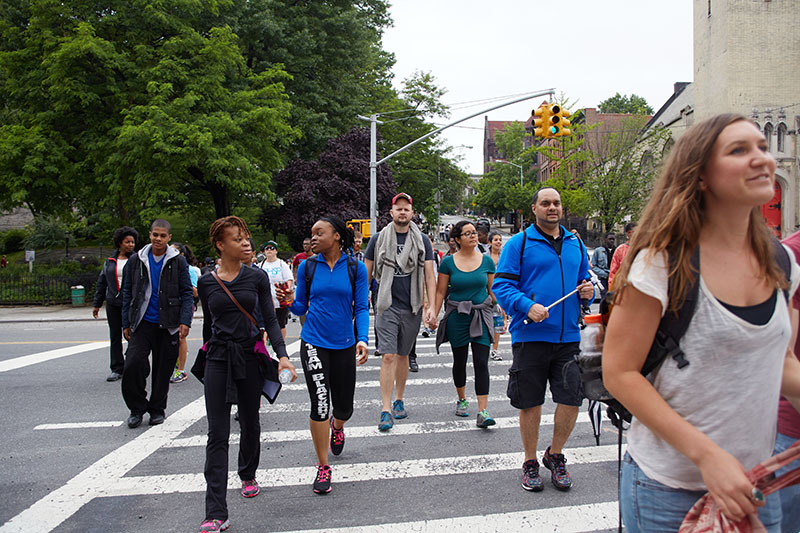Crowdfunding for Advocacy and Organizing
Published July 17, 2018
You could say the concept of crowdfunding is as old as civilization itself—or, at least as old as money. The act of pooling assets to achieve a common goal is nothing new. (Fun fact: did you know the Statue of Liberty was a crowdfunded project?)
In the past 20 years or so, crowdfunding campaigns to launch new businesses, pay for medical expenses, and support charitable missions have become as popular as venture capital meetings and bake sales. The internet has revolutionized individuals’ and organizations’ ability to drum up funding for things people care about, and for that, we thank it. But crowdfunding is not a one-trick pony whose only talent is raising cash.
At ioby, we’ve seen crowdfunding help communities in many ways. It can build lasting local buy-in, help groups avoid reliance on grants, and serve as a springboard to more major funding—just to name a few.
Below we’re highlighting three great stories about another of crowdfunding’s most potent powers: its capacity to drive community organizing and advocacy.
Crowdfunding for advocacy and organizing
[Bikers with the Cleveland Refugee Bike Project]
Animating political advocacy
Cleveland Refugee Bike Project
At a time when immigrants are being maligned in policy decisions and the media, Tim Kovach of Cleveland decided to help change the narrative. His project works to improve mobility—both physical and social—for the city’s refugee community by providing them with bicycles to ride and the training and tools they need to become safe, self-sufficient riders. “After the [2016] election, it was evident that people really wanted to do something,” he says, “and we were there with some issues that were really at the heart of the election: immigration, refugees, climate change, transportation equity, human dignity…”
Read how Tim raised over $13,000 on ioby to help refugees resettle—and got his neighbors on board.
Supporting local organizers
Earlier this year, the City of Boston began partnering with ioby to support residents in creating their own third space projects. “Government is not always an expert in supporting these spaces,” admits a post by the Mayor’s Office of New Urban Mechanics. “But our residents are.” ioby is proud to be providing community organizers all over Boston with one-on-one fundraising coaching, campaign pages on our website, and, if they need it, fiscal sponsorship through our 501(c)3 nonprofit designation.
Read how ioby is empowering resident advocates in Boston.
[Participants in the annual Hike the Hikes, in Northern Manhattan]
Advancing historic missions
Hike the Heights
Sadly, it’s an old story: the lower your neighborhood’s average income, the less likely you are to have access to open green spaces. In 2004, Dr. Mindy Fullilove—daughter of renowned community organizer Ernest Thompson—and a group of her NYC neighbors formed the community partnership CLIMB. Over the next decade-plus, they succeeded in trailblazing the Giraffe Path, an urban trail that connects six previously isolated parks in Northern Manhattan. The annual hike between them (and post-hike celebration) now attracts thousands of residents to enjoy and steward these urban sanctuaries, many of which had earlier fallen prey to disinvestment. Dr. Fullilove says CLIMB took the same “decades-old influence of progressive organizing in the U.S. into our work” as her father did into his.
Read how CLIMB used crowdfunding to organize people around, in, and between parks to reclaim their space—and their health.
Of course, all of these projects (like every ioby project!) is more than the sum of its parts. The positive ripple effects of our local leaders’ visionary efforts are intersectional by nature—just like crowdfunding itself. How might crowdfunding help you advocate for and organize your community? Tell us about it!


